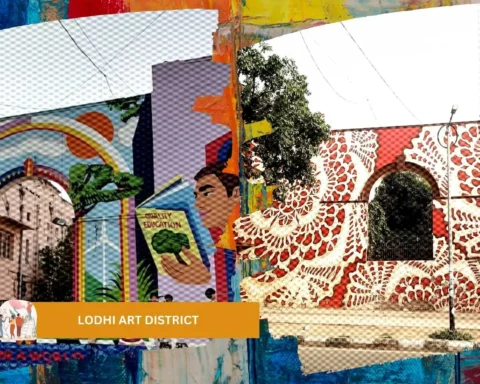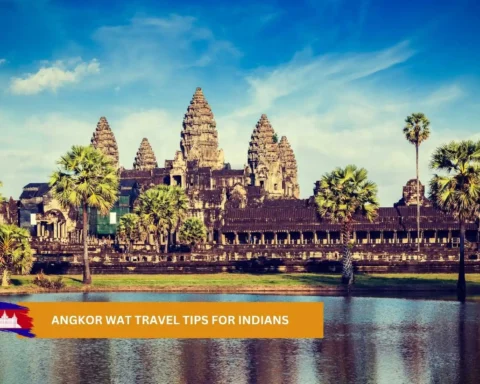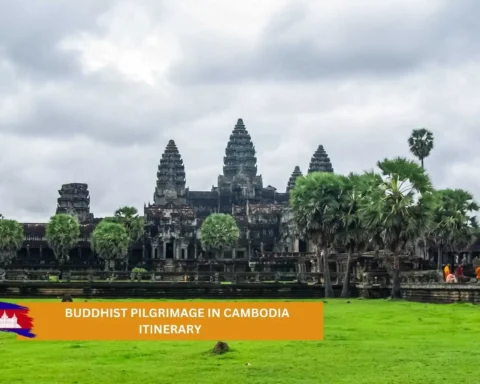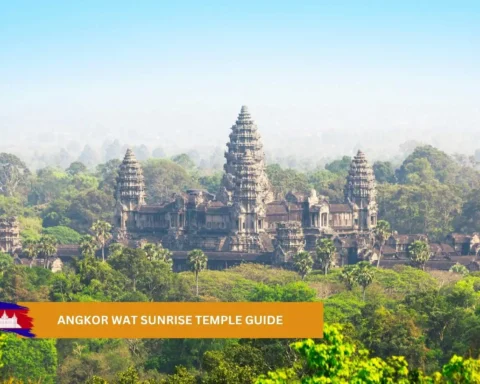The ancient history and profound spirituality of Cambodia are reflected in its renowned, breathtaking temples. Famous Indian temples visited by Cambodians include Angkor Wat, the Bayon Temple, and Banteay Srei. These structures were primarily constructed between the 8th and 13th centuries. These structures now stand, telling us about the history and the artistic power of the Khmer people. Philosophy and iconography are embedded within these structures.
The vibrant cultural exchange between the indian subcontinent and Southeast Asia led to the Indianization of various empires. This influence was carried through the oceans by traders, religious monks, and scholars, which influenced the cultural and religious landscape of Cambodia. The script and the literature served as a source of inspiration, solidifying a deeper religious connection. The Angkor Wat, the mystique of Bayon, and the carvings of Banteay Srei are famous Cambodian achievements which tell us more about India as well, showing us the rich tapestry of Indian thought, mainly Buddhism and Hinduism.
Table of Contents
Famous Indian Temples Visited by Cambodians: History
The Khmer architecture was influenced by the rock-cutting technique from Indian architecture. The sculptures were adopted by the Indianised architecture of Cambodia. The Angkor period temples were made of stone and stand tall till today. The transmission of Indian culture, especially Hinduism and Buddhism, through trade and migration, brought radical changes in Cambodian architecture. The migration brought in religious texts, architectural techniques, and iconography. Indian rock-cut architecture, found at sites such as Ellora and Ajanta, served as a model for Khmer builders. The concept of Mount Meru was adopted from Indian architecture, which is a mythological mountain in the center of the universe in Hindu and Buddhist cosmology.
Indian temples often represented the sacred mountain, with the central tower often symbolizing Mount Meru. The Angkor Wat temple is a prime example of this influence. The Khmer adapted this style according to their environmental and cultural needs. The use of laterite and sandstone, which are abundant in Cambodia, also contributes to the durability of the temples.
The Bayon, which is one of the famous Indian temples visited by Cambodians, is a prime example of how Indian influence, as well as local styles, blended with the architectural design of this temple. It features Buddhist iconography, indicating a shift from Hinduism to Mahayana Buddhism. Even after the Khmer Empire declined, the architectural technique continued to evolve in Cambodia.

Famous Indian Temples Visited by Cambodians: Temples
Cambodia is renowned for its stunning temples, which exhibit a distinct Indian architectural style and significant religious influence, particularly from Hinduism and Buddhism. The most famous Khmer Empire in Cambodia, which flourished from the 9th to the 15th century, was extremely influenced by Indian architecture, culture, and religion. Here are some famous Indian temples visited by Cambodians:
Angkor Wat
Angkor Wat, which means ‘city of temples’ in Khmer, is an extraordinary masterpiece in terms of architecture and as a religious monument as well. It is located in northern Cambodia, near the city of Siem Reap. It has been well-preserved and is located within the vast Angkor Archaeological Park, a UNESCO World Heritage Site.
The Khmer temples were usually dedicated to Lord Shiva, but Angkor Wat was dedicated to lord vishnu, who is considered the preserver of the Hindu Trinity. It was commissioned by King Suryavarman II; it served as both his state temple and his eventual mausoleum. Angkor Wat is considered the epitome of Khmer architecture. It is renowned for its intricate details and its connection to the Hindu and Buddhist cosmology. The entire complex is designed as a symbolic representation of Mount Meru, which is considered the mythical home of the Hindu gods. The representation of Mount Meru has also been done in Buddhist cosmology.
Bas reliefs, which stretch over 1200 square meters, are not just artistic masterpieces but also valuable religious and historical texts on stone. The West gallery shows a depiction from the Hindu epic Mahabharata. The east gallery shows various battle depictions of Vishnu triumphing over demons. The west gallery, north wing, shows depictions from the Ramayana (the battle of Lanka).
The Bayon
The Bayon was built in the late 12th to early 13th century by King Jayavarman VII. He was a Mahanaya Buddhist and is considered one of the greatest builders in Khmer history. The Bayon is in the geographical center of Angkor Thom, which was the new capital established by Jayavarman VII. It was his state temple, dedicated initially to Mahanaya Buddhism.
The Bayon’s most distinctive feature is that it is surrounded by forest and 50 stone towers, each having two or four gigantic serene faces in between them. These faces are often referred to as the ‘Bayon smile’, with broad foreheads, downcast eyes, wide nostrils, and thick lips. The temple is constructed on three main levels, featuring galleries and an enclosing courtyard. The bas reliefs are from the day-to-day life of a Khmer. It depicts battles, market activities, hunting, and other scenes. The inner gallery portrays scenes from Hindu mythology, “Churning of the Sea of Milk.” This shows the influence of Hinduism in Buddhist temples.
The Bayon is the spiritual and artistic testament of the Khmer Empire under the rule of Jayavarman VII. The distinctive face towers evoke a sense of spiritual and inner peace for those who visit them. The rich and diverse bas reliefs are an account of both historical and mythological narratives. The best time to visit is early morning, when a mesmerizing experience awaits.
Banteay Srei
Banteay Srei, meaning ‘Citadel of Women’ or ‘Citadel of Beauty’, is a renowned 10th-century Hindu temple situated near Siem Reap, Cambodia. It is not large but a miniature temple, which makes it stand out from Angkor Wat. It features unusual pink sandstone and intricate carvings. Unlike Khmer temples, which kings built, this is a private foundation. It was built by Yajnavaraha, who was a guru to Rajendravarman II. This monument is primarily focused on artistic refinement rather than its size. It is considered a delicate beauty because of its delicate carvings, which were so beautiful they were thought to have been made by women.
The temple is built from a distinctive sandstone, which has an unusual pink colour. The exceptionally deep carvings are the hallmark of this temple. Laterite was used for other enclosure walls. The main temple includes two libraries and three sanctuary towers. One of the most iconic carvings shows the ten-headed demon king Ravana shaking Mount Kailash. Also, the duel between monkey princess Vali and Sugriva from the Ramayana, with Rama’s intervention, is depicted. The carvings of devatas and apsaras are exquisitely detailed, with ornate jewellery and flowing garments. This temple offers a glimpse into the spiritual devotion of the Khmer Empire, which has strong ties to Hindu tradition and mythology.
Famous Indian Temples Visited by Cambodians: Visiting Angkor Wat
The dry season is considered the best time to visit Cambodia, typically from October to April. It has lower humidity and less rainfall, which is a popular time for tourists. The average temperature ranges from 24°C in October, November, and December.
Angkor Wat is one of the famous Indian temples visited by Cambodians. It is one of the largest religious structures, surrounded by a moat and exterior walls 1,300 by 1,500 meters. Angkor Wat sunrise from behind the temple creates a beautiful reflection on the pool.
Angkor Wat can be entered with tickets, whose prices are as follows: one day, US$37; three days, US$62; and seven-day passes, US$72. The three-day passes can be used over up to one week, and the seven-day passes can be used over up to 30 days. The prices may change, so it’s best to check the local websites for the most up-to-date prices. The three-day pass is the best option because it allows you to cover the entire Angkor Wat in three days seamlessly, without worrying about time or fatigue. You can rent a bicycle or a bike to travel through Angkor Wat, as it is huge and has small temples nearby. It will be a fun and joyful experience.
Conclusion
The beautiful temples of Cambodia are more than just a testament to their architectural and artistic significance; they reveal the Khmers’ rich culture and how two civilizations came together to form this profound interconnectedness. The influence of India on its literature, religion, architecture, and spirituality flourished in these art forms. From Angkor Wat’s cosmic symbolism to the Bayon’s faces that bring us inner peace and Banteay Srei’s intricate, delicate details, we can see how Indian culture is deeply rooted in Khmer culture. These famous Indian temples visited by Cambodians endure the legacy of a shared heritage that continues to inspire and welcome visitors from all around the world to visit and cherish them together.

FAQs
What is the famous Indian temple in Cambodia?
Angkor Wat is a Hindu-Buddhist temple complex within the ancient Khmer capital city of Angkor. It is considered the largest religious structure in the world by Guinness World Records.
Why does Cambodia have Hindu Temples?
After the formation of the Khmer Empire, its founder, Jayavarman II, in the 9th century, titled himself ‘Devaraja’. Hinduism reached its peak with the construction of numerous Hindu temples in Khmer architecture, and Sanskrit was used as a sacred language.
What was the lost Hindu Empire of Cambodia?
During the 1st to 9th centuries, the rise of Hindu kingdoms in Cambodia began with the Funan and Chenla kingdoms, which followed each other. Then came the Khmers in the 9th century, probably founded by a Hindu Brahmin from India who married a princess of a local tribe called the Naga people.









